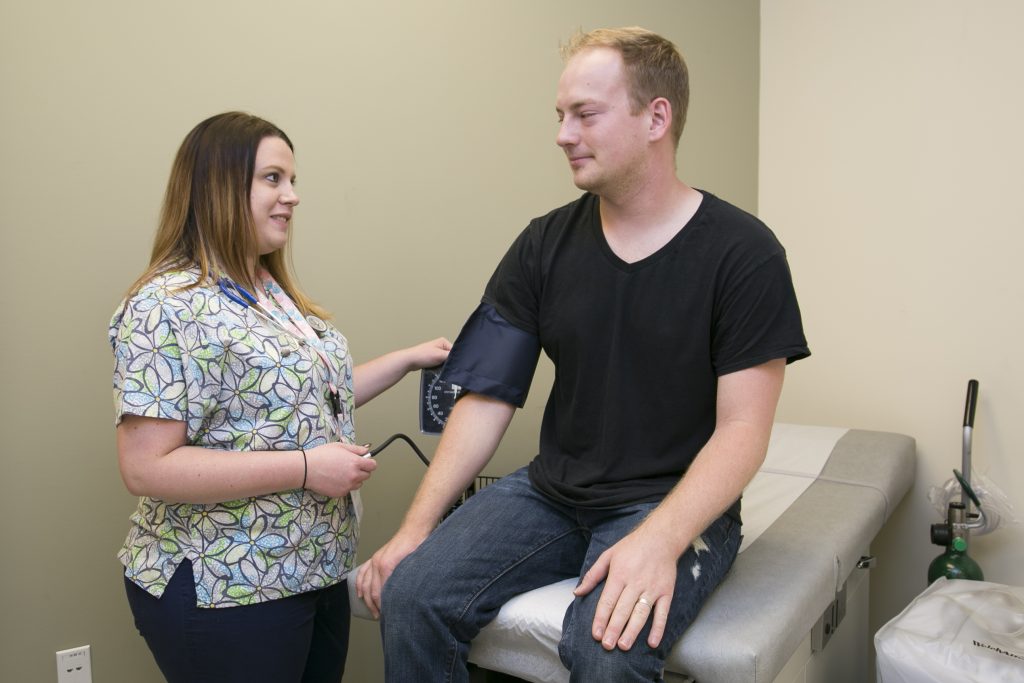High Functioning Alcoholic
When people describe high-functioning alcoholics, they’re usually referring to a person whose drinking is out of control but who can keep up appearances and responsibilities. People who meet these descriptions may still have an alcohol use disorder, and they’ll benefit from seeking treatment, regardless of how well they may be functioning.
What Is a High-Functioning Alcoholic?
A high-functioning alcoholic is a person who is addicted to alcohol but manages to maintain their other responsibilities and obligations. They may still go to work every day, pay their bills on time, and spend time with their friends and family. But while they may have these situations under control, their drinking is far from it. They may still struggle to stop drinking, have withdrawal symptoms if they suddenly stop, and experience other symptoms characteristic of an alcohol use disorder, which is the clinical term for an alcohol addiction.
Signs of a High-Functioning Alcoholic
Up until May of 2013, the American Psychiatric Association divided alcoholism into two distinct disorders: alcohol dependence and alcohol abuse. High-functioning alcoholism generally fell into the category of alcohol dependence and focused on the physical aspects of frequent drinking. It was considered to be the more severe side of alcoholism. But addiction researchers ultimately combined the two diagnoses into a single “alcohol use disorder” to better match people’s lived experience of alcoholism.
People who are high-functioning but have an alcohol use disorder show signs such as:
- Increased alcohol tolerance — having to drink more to achieve the desired effect
- Withdrawal symptoms if alcohol use is suddenly stopped
- Spending a great deal of time drinking, seeking out alcohol or recovering from its effects
- Repeated unsuccessful attempts to cut down or stop drinking on their own
- Continued drinking despite harmful physical or psychological consequences
- A loss of interest in activities outside of alcohol use
Meeting just two of these criteria is enough to be diagnosed with an alcohol use disorder.
If you are struggling with alcohol addiction, we are here for you.
Risk Factors for High Functioning Alcoholism
There are several factors that can increase the risk of a person developing high-functioning alcoholism. Importantly, many of the risk factors for alcohol use disorders and high functioning alcoholism overlap. The only real difference is the ability to keep up with certain responsibilities. These are four of the most common risk factors for high-functioning alcoholism; they may indicate that you or your loved one is at risk of developing an alcohol problem.
Alcohol Tolerance
Increasing alcohol tolerance is one of the primary risk factors for developing high-functioning alcoholism. When someone drinks heavily for a long time, their alcohol tolerance reaches higher levels. They then need to drink more to achieve the desired effect, putting them at high risk for developing an alcohol problem.
Workplaces that Tolerate or Endorse Alcohol Use
Workplaces that permit or encourage alcohol use can quickly lead to people developing an alcohol use disorder. Certain industries are more susceptible to workplace drinking cultures than others, including the service industry, sales jobs and labor-intensive work environments, such as construction or excavation. When a workforce regularly meets after work to drink, has regular work parties involving alcohol, or encourages their associates to take clients out for drinks, high-functioning alcoholism can result.
High Levels of Psychological Stress
Feeling stressed out in life, work, or relationships can often lead to problematic drinking. Many people will turn to drinking alcohol as a stress-relieving activity. They may use it to wind down after a hard day or to put dealing with their problems off for another time. While alcohol use may be beneficial in the short term, it ends up leading to more stress down the line. Consequently, the learned solution for stress — alcohol — becomes both the problem and the coping mechanism.
Co-Occurring Mental Conditions
People with co-occurring mental health disorders, such as anxiety, depression, or post-traumatic stress disorder (PTSD), have much higher rates of alcohol use disorder than the general population. Researchers believe this to be due to, at least in part, an attempt to self-medicate the mental health symptoms. But just as drinking can add to your overall stress levels when used as a stress reliever, it can also worsen mental health symptoms when used to self-medicate.
Dangers of High-Functioning Alcoholism
Many people who perceive themselves to be high-functioning despite having an alcohol use disorder believe that their drinking doesn’t cause substantial consequences. This simply isn’t true — alcohol use can have severe effects on both your physical and mental health and can harm the people around you.
- Physical health: Heavy drinking can cause severe physical health consequences. Alcohol can cause irreparable damage to the liver, increase your risk for cardiac illness, and is a known human carcinogen.
- Worsened mental health: Drinking to self-medicate stress or mental health conditions can make these problems worse. It can also stop people from seeking treatment for these issues, which could substantially increase their quality of life.
- Damaged Relationships: Even if you are able to maintain certain responsibilities and obligations, high-functioning alcoholics can damage their close relationships. In fact, continuing to drink despite interpersonal problems is a sign of an alcohol use disorder.
- Lost time: Spending time drinking or recovering from the effects of alcohol can take time away from other important aspects of your life.
- A teetering lifestyle: The dividing line between high-functioning alcoholism and severe alcohol consequences is frighteningly slim. When someone lives with an alcohol use disorder, a single event, such as an unexpected job loss, can spiral their life out of control.
Further, many people who have been drinking for years are simply unaware of how much better their lives could be without alcohol. Decades of research have shown that nearly everyone who drinks heavily and then achieves sobriety will report a higher quality of life, better physical and mental health symptoms and improved relationships with the people they care about the most.
Living with a High-Functioning Alcoholic
Living with a person who has a high-functioning alcohol use disorder can be physically and mentally draining. You can see your loved one struggling, even if they don’t see it themselves. Fortunately, there are steps you can take if you think your loved one is struggling.
First, set aside time to have an open and honest discussion about how their drinking affects you. Don’t make accusations or demands; simply share what you experience when they drink and encourage them to speak about their drinking from their perspective. You might have your loved one perform a self-assessment for alcohol problems, such as:
These verified psychological tools can help determine if your loved one may have an alcohol problem or not. If they do, they may need specialized addiction treatment in order to recover.
Seeking Alcohol Addiction Treatment in Columbus, OH
The Recovery Village Columbus Drug and Alcohol Rehab provides premier alcohol addiction treatment services in the heart of Columbus, Ohio. Our program provides the full continuum of care, from alcohol detox to inpatient drug rehab, outpatient treatment, and beyond. Our multidisciplinary team of counselors, physicians, psychiatrists, and support staff is dedicated to helping people break free from the chains of addiction and build themselves a better life in recovery.
Top Reads About Alcohol Addiction

How Long Does Alcohol Stay In your System?
The time it takes for alcohol to have an effect depends on a variety of factors and will be… Read More

Alcohol Addiction Treatment in Ohio
If you can’t seem to stop drinking, you’re not alone. Let our experts help you heal… Read More

Am I an Alcoholic?
Knowing the signs of alcohol addiction can help you identify whether you or a loved one may be at… Read More

Does Alcohol Affect the Kidneys?
Alcohol causes dehydration, which decreases blood flow to the kidneys and makes it more difficult… Read More

Understanding Alcoholism and Finding Resources for Alcohol Addiction
This resource guide is an overview of the information currently available on alcohol use and abuse… Read More
View Sources
National Institute on Alcohol Abuse and Alcoholism. “Understanding Alcohol Use Disorder.” 2020. Accessed July 30, 2022.
American Psychiatric Association. “Substance-Related and Addictive Disorders.” Accessed July 15, 2022.
Keyes, K. M., Hatzenbuehler, M. L., Grant, B. F., & Hasin, D. S. (2012). “Stress and alcohol: Epidemiologic evidence.” Alcohol Research: Current Reviews, 34(4), 391–400, 2012. Accessed July 15, 2022.
Korcha RA, Polcin DL, Bond JC, Lapp WM, Galloway G. “Substance use and motivation: a longitudinal perspective.” American Journal of Drug and Alcohol Abuse, November 19, 2010. Accessed July 15, 2022.
National Institute on Drug Abuse. “Comorbidity: Substance Use and Other Mental Disorders.” National Institute on Drug Abuse, August 15, 2018. Accessed July 14, 2022.
National Cancer Institute. “Alcohol and Cancer Risk Fact Sheet – NCI.” July 14, 2021. Accessed July 14, 2022.
Osna, Natalia A., et al. “Alcoholic Liver Disease: Pathogenesis an[…] Current Management.” Alcohol Research: Current Reviews, vol. 38, no. 2, 2017. Accessed July 14, 2022.
Sinha, Rajita, et al. “Enhanced Negative Emotion and Alcohol Cr[…]pendent Individuals.” Neuropsychopharmacology, June 18, 2008. Accessed July 14, 2022.
Substance Abuse and Mental Health Services Administration. “Substance Use and Substance Use Disorder[…]ndustry | CBHSQ Data.” April 16, 2015. Accessed July 14, 2022.
